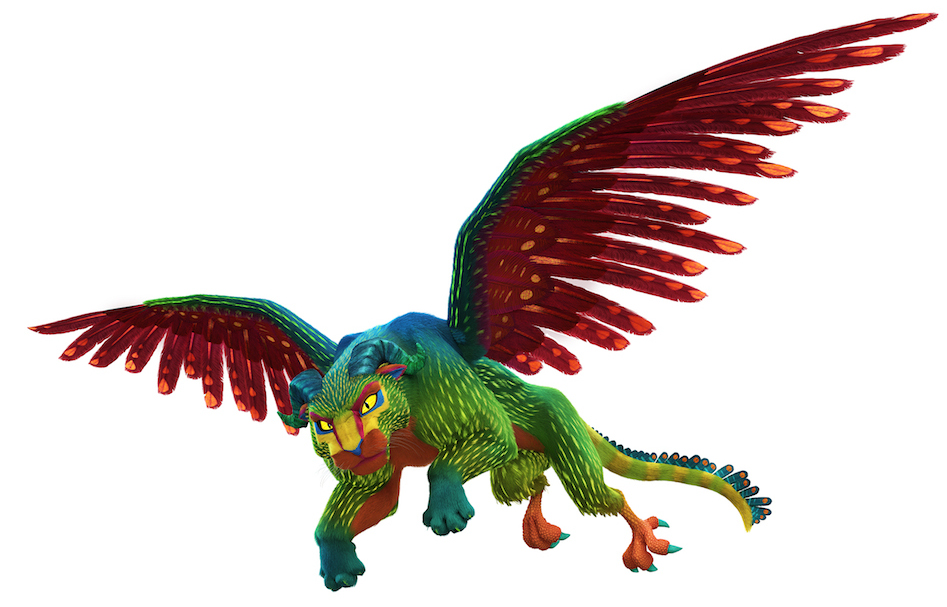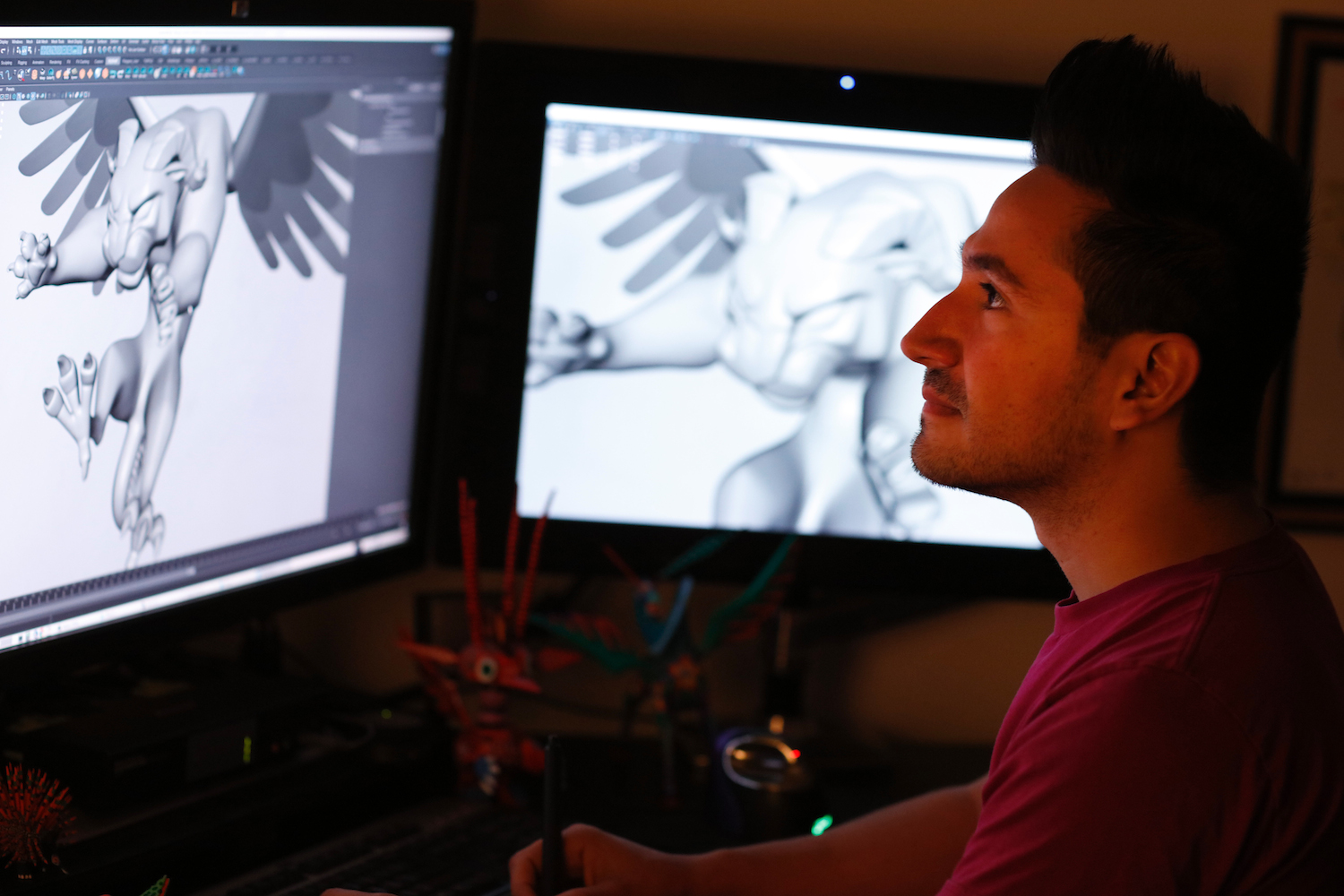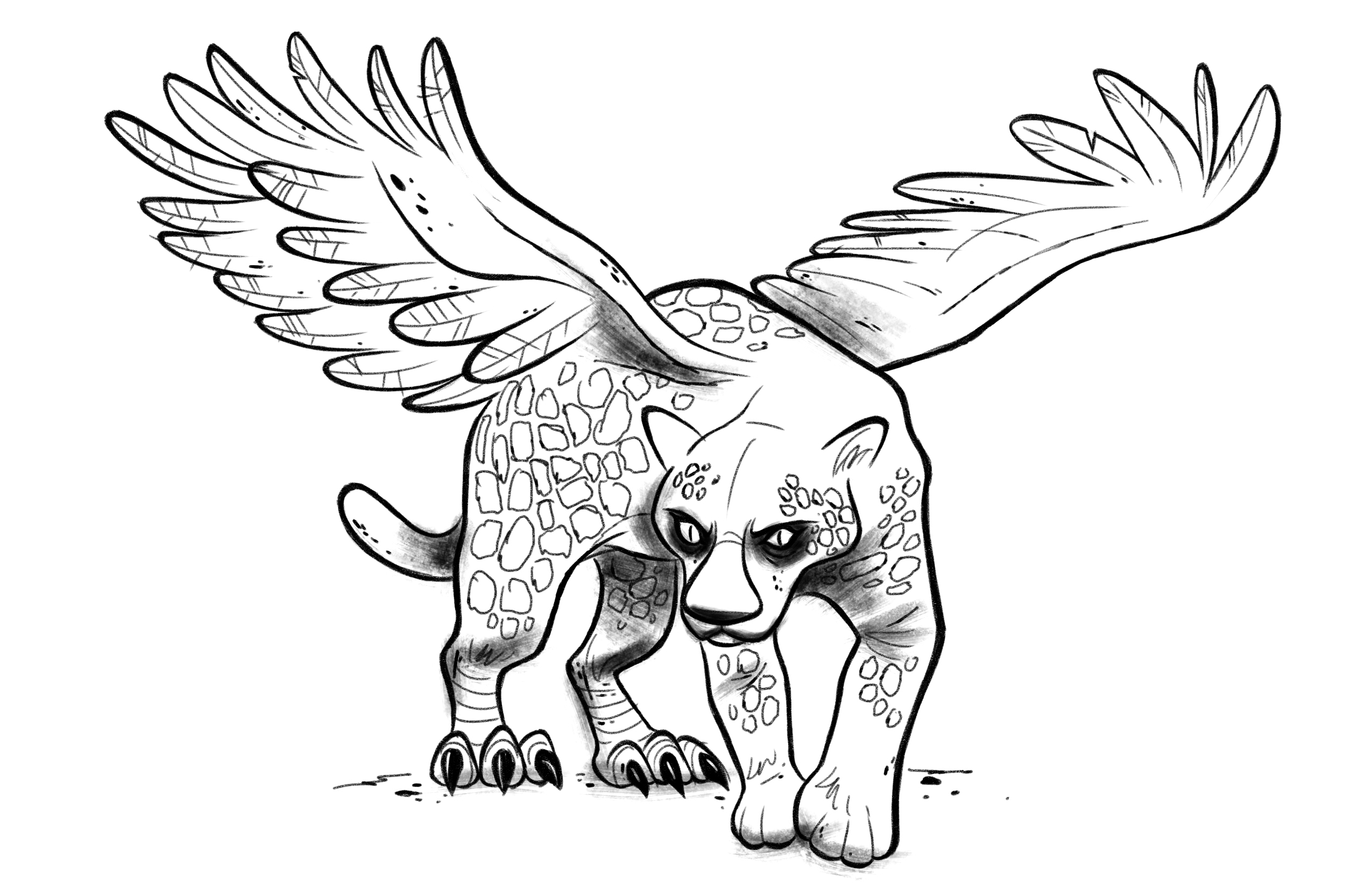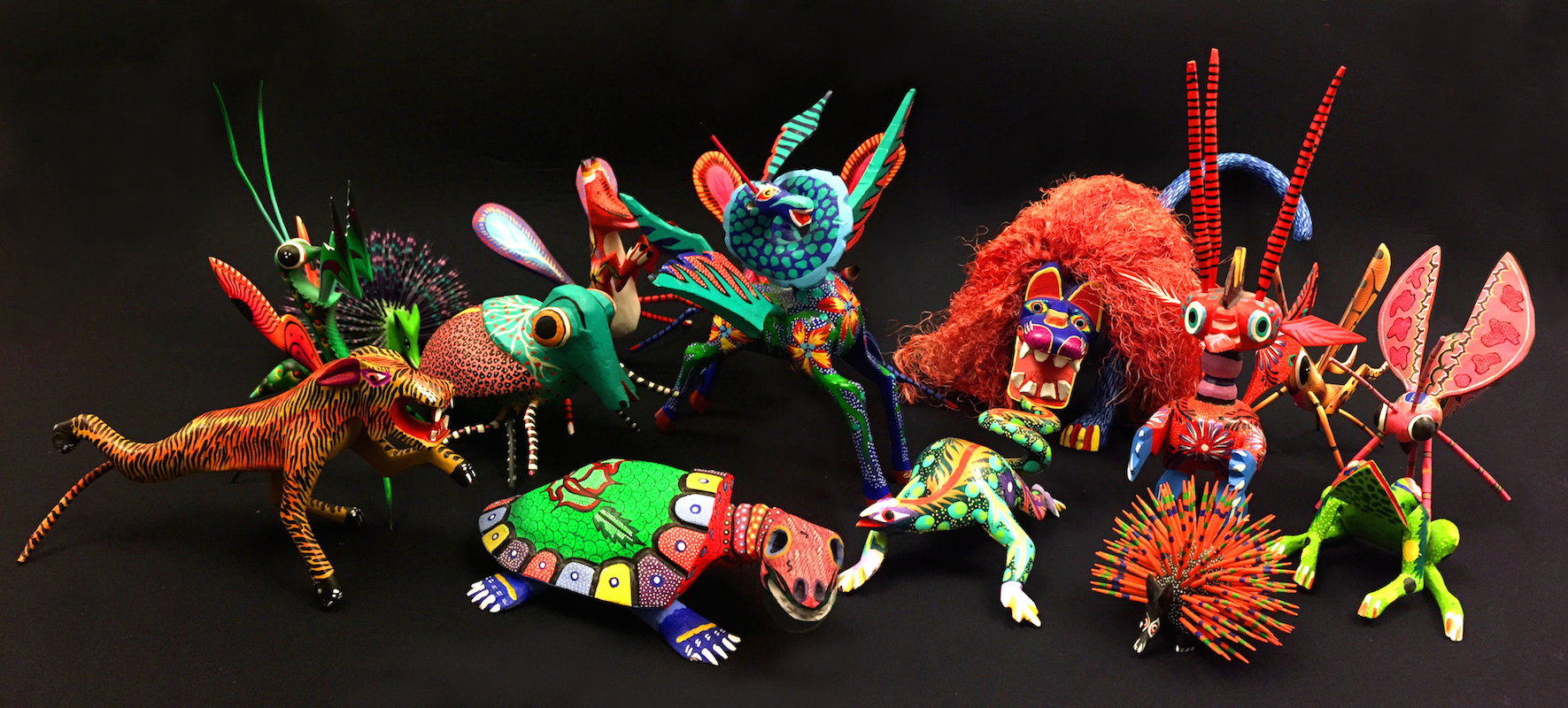We are but a few months away from the premiere of Disney-Pixar’s latest film, Coco. That means more information about the Día de Muertos-inspired project will be trickling in to get you even more stoked about it. Featuring the voice talent of Gael García Bernal, Benjamin Bratt, Edward James Olmos and Jamie Camil, Coco follows a boy who finds himself traveling to the Land of the Dead in search of the musical icon Ernesto de la Cruz. We’ve already gotten a good look at young Miguel and his adorable Xolo dog, Dante, and got brief glimpses of the Guanajuato-inspired Land of the Dead in the movie’s trailer. But wait until you meet Pepita.
Inspired by Mexican folk art, Pepita is a chimera animal that’s part big cat (think tiger or jaguar), part eagle (look at those wings and talons), and borrows features from several other animals, including ram horns and an iguana-like tail. And Remezcla has your exclusive first look at this visually striking creature, which plays a pivotal role in what’ll be Pixar’s 19th film to date.

As Adrian Molina, the Coco‘s co-director, shared with Remezcla, Pepita is an alebrije. Part of Mexican artisan folklore, especially in the Oaxaca region, alebrijes are small figurines made out of paper maché or carved out of wood that represent mythical animal mashups. Molina and the Pixar team came across these brightly-colored sculptures while doing research for the film. They were immediately smitten with them.
“You see these sculptures,” he told Remezcla, “and one, they’re so beautiful and two, there’s so much life and character in the way that they’re sculpted and the colors and the features. Seeing that we thought, ‘Oh, we would love to have a place in our film for this art form to be represented and for these creatures to come to life.’” Pepita is one of many. Molina said audiences can look forward to seeing another that’s a mish-mash of a frog and a rabbit, and others more reminiscent of armadillos, porcupines, and insects. But Pepita is by far the most imposing and awe-inspiring of them all. She functions in the film as a sort of spiritual guide for Miguel’s great-great grandmother Mamá Imelda, a nod both to the Land of the Dead world they’ve conjured up and to the origin of alebrijes themselves.

First dreamed up by Pedro Linares in the 1930s, alebrijes were creatures the Mexican artisan saw while lying in bed sick and unconscious. In his feverish dreams, he envisioned a forest populated by these colorful animals that looked unlike anything he’d seen before and when he came back to, he proceeded to sculpt them out of paper maché.
Admired and championed by the likes of Frida Kahlo and Diego Rivera, Linares popularized these creatures which he named after the very sound they kept making in his dream: “Alebrije! Alebrije!” they shouted at him. This connection between dreamlike images at death’s door allowed the Coco team to incorporate alebrijes, who aren’t traditionally tied to the Día de Muertos celebration, into their spin on the Land of the Dead, imagining them as guides in the spiritual world.

Not that Pepita began as an alebrije. Originally, Molina shared, they’d first considered making her a Xolo dog only more colorful and with wings. But, from an artistic point of view, opting to make her an alebrije opened up all sorts of exciting possibilities. They tried all sorts of combinations before arriving at what she looks like now. One of the animators who worked on Pepita, Alonso Martinez, felt particularly well-suited to help with her design – after all, he’s been collecting alebrijes all his life.
Drawn to them since he was a child (and having more than 30 of them in his office), Martinez worked closely with the Art Department to help nail down the way they’d incorporate the artistry of alebrijes into Pepita, finding a balance between getting her to look realistic (as they imagine Linares must have seen these creatures) and the more sculptural look alebrijes have in general.

“What I love about alebrijes is how each one of them feels unique. What these artisans are doing is they’re working with the shape of the wood. They look at it and ask, what kind of animal is this? Inherently every single alebrije is different – I always had that feeling like I was capturing a Pokémon. Like, I found a rare one!”
Not only did he research big cats and eagles, for example, but he pushed for Pepita’s design to capture the color-blocking that’s so characteristic of alebrijes. He’s particularly proud of the yellow markings that make her facial expressions pop. It was something that was going to be crucial considering that Pepita will have no dialogue in the movie. She’ll only make animal-like roars and noises that, Molina shared, the sound department has been having a lot of fun exploring seeing as they’re not tied to merely mimicking any one animal.

That kind of attention to detail speaks to the commitment by the Coco team to really capture the vibrant artistic and folkloric aspect of Día de Muertos that’s central to the film. “For anyone who’s familiar with it,” Molina beamed, “I hope they see a lot of detail they recognize. And for people who this may be on their radar but don’t have a really deep understanding of it, I hope it helps gives them that much deeper a connection to the celebration.”
Martinez, for one, is most excited to show the movie to one person in particular. Having called her up several times during production to ask questions about Mexican culture, he’s eager to bring his mom to the internal Pixar screening of Coco that’s coming up. It’ll be a way to repay her for her insights about, among other things, María Félix’s films and songs. But also, a way to celebrate the project’s cross-generational and cross-cultural spirit. “I know I’m gonna cry. And I know she’s gonna cry. And I know it’s going to be amazing.”
Coco hits theaters in Mexico shortly after opening the Festival Internacional de Cine de Morelia (FICM) on October 20, 2017 and opens in U.S. theaters on November 22, 2017.







